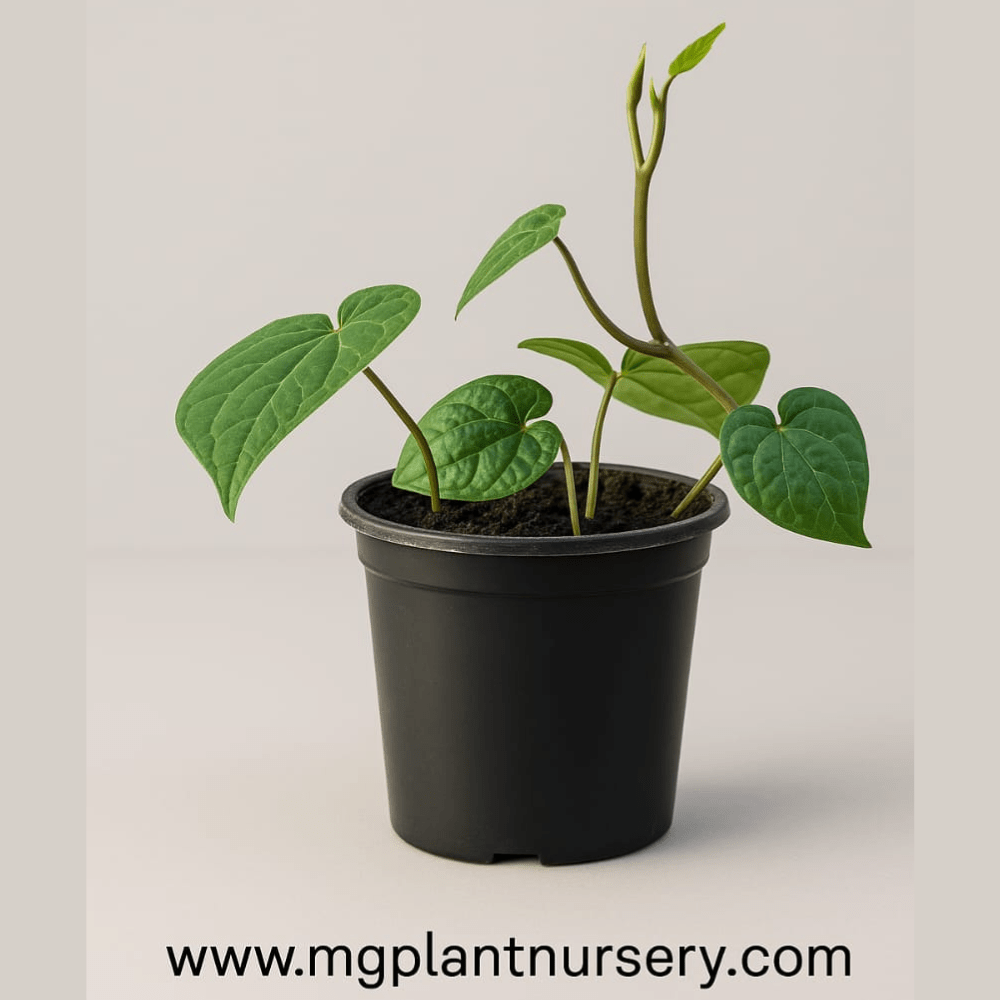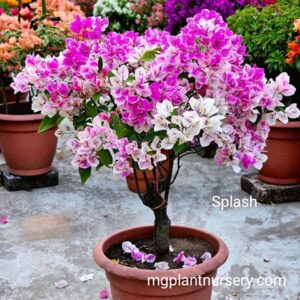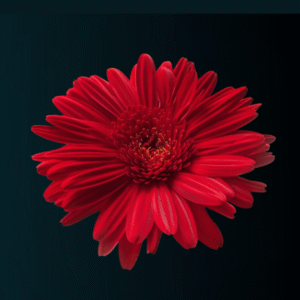Paan (Betel)
Bring the vibrant essence of India home with our healthy, live Betel Plant, also known as a Paan Plant! Cultivate your own fresh, aromatic leaves for traditional paan preparations, ceremonies, or simply to enjoy its lush, heart-shaped foliage. This easy-to-grow climber thrives with a little care and will be a unique addition to your home garden or balcony. Start your journey of growing this revered plant today!
Caring for a Betel (Paan) plant can be rewarding, as it’s a beautiful climbing vine with culturally significant leaves. Here’s a guide to help your Betel plant thrive:
1. Light:
- Partial Shade/Indirect Bright Light: Betel plants prefer bright, indirect sunlight. Think of a spot that gets morning sun or dappled light throughout the day.
- Avoid Direct Afternoon Sun: Harsh direct sunlight, especially in the afternoon, can scorch the leaves. If growing outdoors in hot climates, provide shade.
- Indoor Placement: An east or north-facing window is often ideal indoors.
2. Watering:
- Consistently Moist, Not Waterlogged: Betel plants like consistently moist soil but absolutely hate soggy conditions, which can lead to root rot.
- Check Soil Before Watering: Water when the top inch or two of the soil feels dry to the touch.
- Watering Frequency: In warmer months (like summer in Kolkata), you might need to water every few days or even daily. In cooler months or during the rainy season, reduce the frequency.
- Drainage is Key: Always ensure your pot has good drainage holes. If using a saucer, empty any excess water that collects.
3. Soil:
- Well-Draining & Rich in Organic Matter: Betel plants thrive in fertile, well-draining soil.
- Slightly Acidic to Neutral pH: A pH range of 5.5 to 6.5 is generally preferred.
- Good Potting Mix: A mix of garden soil, coco peat, and compost works well. You can also add some sand for better drainage.
4. Temperature & Humidity:
- Warm & Humid Climate: Betel plants are tropical and prefer warm temperatures, ideally between 21°C to 35°C (70°F to 95°F).
- Protect from Cold: They are sensitive to cold and frost. If temperatures drop, bring them indoors.
- High Humidity: Betel plants love humidity. You can increase humidity by:
- Misting the leaves regularly.
- Placing the pot on a pebble tray filled with water (ensure the pot isn’t sitting directly in the water).
- Using a humidifier nearby, especially in dry indoor environments.
5. Fertilization:
- Regular Feeding During Growing Season: During the main growing seasons (spring through fall), feed your plant every 20 days to every 4-6 weeks.
- Balanced Fertilizer: Use a balanced, water-soluble houseplant fertilizer (e.g., NPK 10-10-10 or 20-20-20).
- Organic Options: Well-rotted cow manure or organic compost can be excellent choices.
- Dilute Fertilizer: Always dilute liquid fertilizers to half strength to avoid burning the roots.
- Avoid Dormant Period: Reduce or stop fertilizing during the dormant winter months.
6. Support:
- Climbing Vine: Betel is a climbing vine and benefits greatly from a support structure. Provide a trellis, moss pole, bamboo stakes, or even allow it to climb on a larger tree.
7. Pruning:
- Encourage Bushier Growth: Regular pruning helps to maintain shape and encourage bushier growth.
- Harvesting: You can harvest mature leaves by gently plucking them from the stem. Regular harvesting also encourages new growth.
- Remove Dead/Yellowing Leaves: Prune away any dead, damaged, or yellowing leaves to keep the plant healthy.
- Rejuvenation: If the vine becomes too long and produces smaller, poorer quality leaves (typically after reaching 1.5-2 meters), you can rejuvenate it by cutting it back and potentially burying the lower part of the vine in the soil to encourage new root growth.
8. Pests and Diseases:
- Common Pests: Keep an eye out for pests like red mites, aphids, and mealybugs.
- Treatment:
- Neem Oil Spray: A diluted neem oil solution is effective.
- Insecticidal Soap: Mild insecticidal soap solution can also be used.
- Physical Removal: For small infestations, you can often physically remove pests.
- Prune Infected Parts: For issues like leaf blight (brown/black oily patches), prune away infected leaves or stems.
- Prevention: Good air circulation and proper watering can help prevent fungal diseases.
By following these care tips, your Betel plant should flourish and provide you with fresh leaves!
Click here to know more






Reviews
There are no reviews yet.